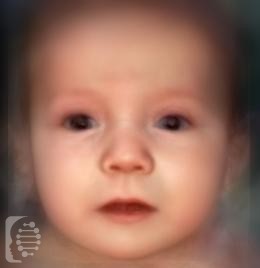What is Dyastrophic Dysplasia (DTD)?
Dyastrophic Dysplasia is a rare genetic condition that affects the development of bone and cartilage. It leads to joint pain and abnormalities in affected individuals. The syndrome affects mainly those of Caucasian descent and occurs in 1 in 500,000 live births in the US.
Syndrome Synonyms:
DD
What gene change causes Diastrophic Dysplasia (DTD)?
Mutations in the SLC26A2 gene are responsible for the syndrome. The syndrome has been identified as being inherited in an autosomal recessive pattern.
What gene change causes Diastrophic Dysplasia (DTD)?
Dwarfism, where the arms and legs of affected individuals do not grow as they should, is the main symptom of the syndrome. Infants with the syndrome are usually born shorter than average.
Delayed motor development is usually an identifying feature in childhood. And children with the syndrome may take longer to master motor skills such as sitting, crawling, and walking.
Physical features of the syndrome include scoliosis (curvature of the spine), an extended or protruding abdomen, hip dysplasia, joint and foot deformities, hernias, cauliflower ears, a cleft placate, and short fingers.
Possible clinical traits/features:
Abnormality of the ribs, Abnormality of the metaphysis, Blue sclerae, Cervical kyphosis, Cerebral calcification, Cleft palate, Abnormality of the metacarpal bones, Abnormality of the hip bone, Abnormality of the clavicle, Bowing of the long bones, Brachydactyly, Disproportionate short-limb short stature, Malar flattening, Limitation of joint mobility, Elbow dislocation, Neonatal short-limb short stature, Costal cartilage calcification, Cystic lesions of the pinnae, Cryptorchidism, Flattened epiphysis, Autosomal recessive inheritance, Overfolded helix, Large earlobe, Micrognathia, Micromelia, Intrauterine growth retardation, Intellectual disability, Abnormal form of the vertebral bodies, Increased bone mineral density, Muscular hypotonia, Joint hypermobility, Laryngotracheal stenosis, Irregular epiphyses, Kyphoscoliosis, Low-set, posteriorly rotated ears, Hypertrophic auricular cartilage, Hypertelorism, Kyphosis, Hypoplastic cervical vertebrae, Short finger, Hearing impairment, Depressed nasal bridge, Glabellar hemangioma.
How is it diagnosed?
To find out if someone has a diagnosis of Dyastrophic Dysplasia (DTD), it is important to have a consultation and evaluation with a clinical genetic specialist. Specialists may also suggest specific genetic testing or other types of tests to help reach a diagnosis. FDNA’s AI technology can help speed up the diagnostic process by analyzing facial features and other health information.

